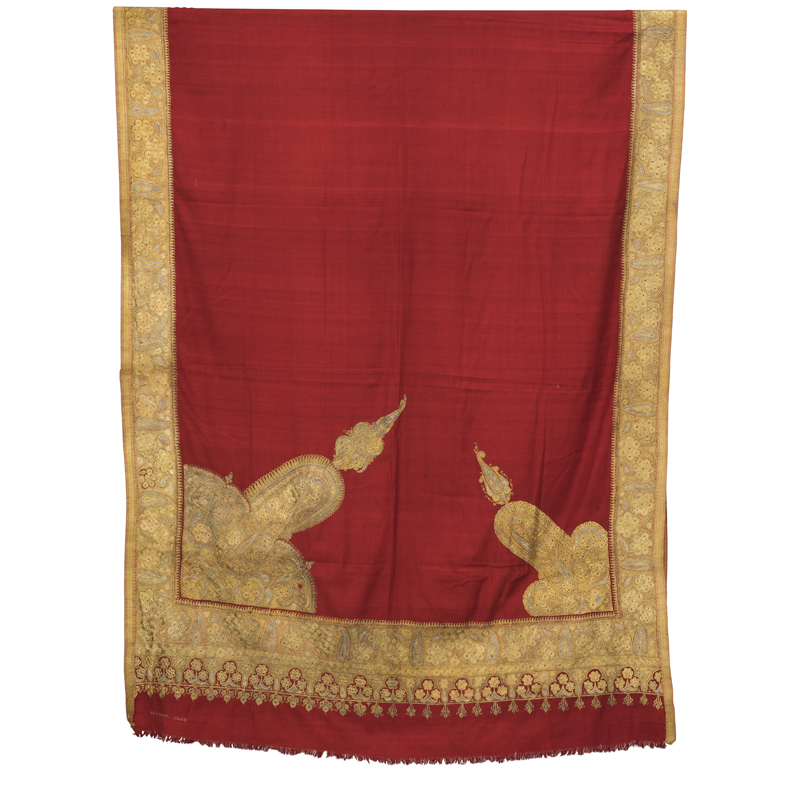Shawl
Description
In Indian textile tradition, pashmina shawls from Kashmir hold a pride place. They were made of wool from a special breed of goat called pashm. A single shawl was a result of the collective efforts of spinners, dyers, designers, weavers, and embroiders. The designs are composed of buta, badami (almond), ambi or kairi (paisely), meander and flora, khat-rast (stripes), and shikargah (hunting) motifs. The craft of making the woollen shawls received immense patronage from Mughal emperors. As mentioned in the Ain-i-Akbari, Emperor Akbar gave these shawls the name param naram meaning very soft. It was a special prerogative of the royal to wear such shawls. Others could wear it only if it was presented by the ruler or permitted by him. In the 17th and the 18th centuries, both embroidered and woven shawls from Kashmir were in great demand by the Europeans and by affluent families in India. In the 20th century, Parsis considered these shawls at the time of weddings in particular. Apart from shawls, doshalas (shoulder mantle), patkas (sash or kamarbandha), rumals (square shawls), jamewars (garment piece to stitch jama) were also made.
Collection
Textiles and Costumes of India
Object Type
Shawl
Material
Pashmina Wool with jari embroidery
Schools/Culture/Period
--
Technique
--
Date
late 19th century CE
Location
Punjab
Dimension
--
